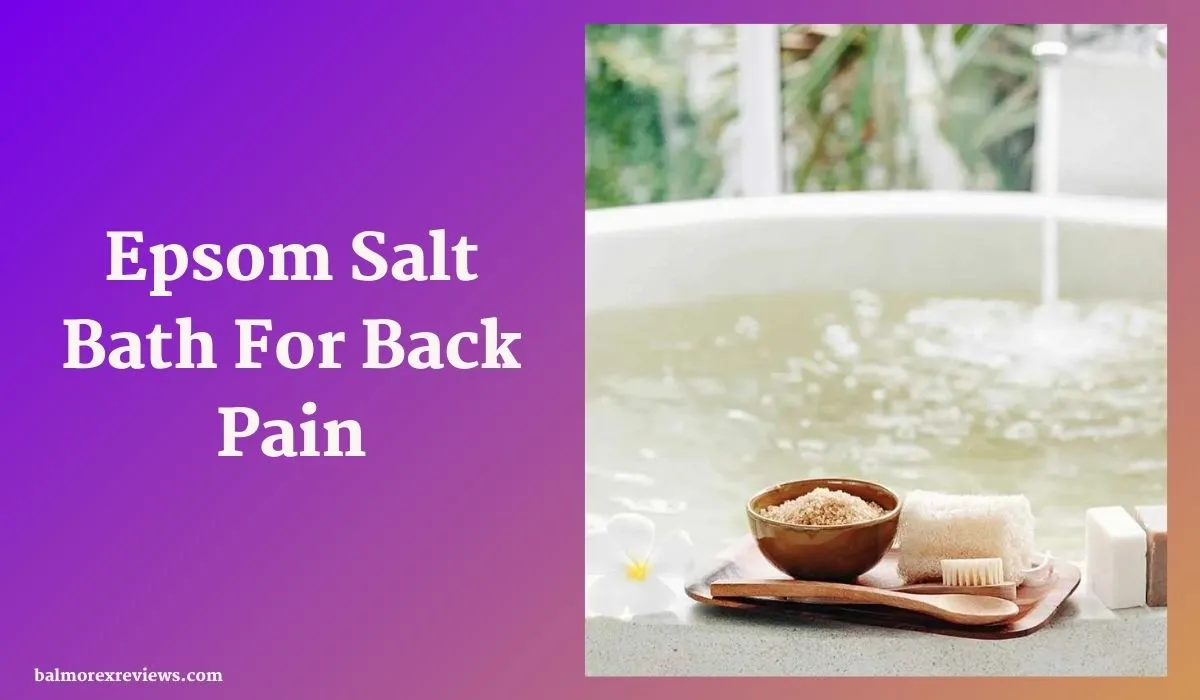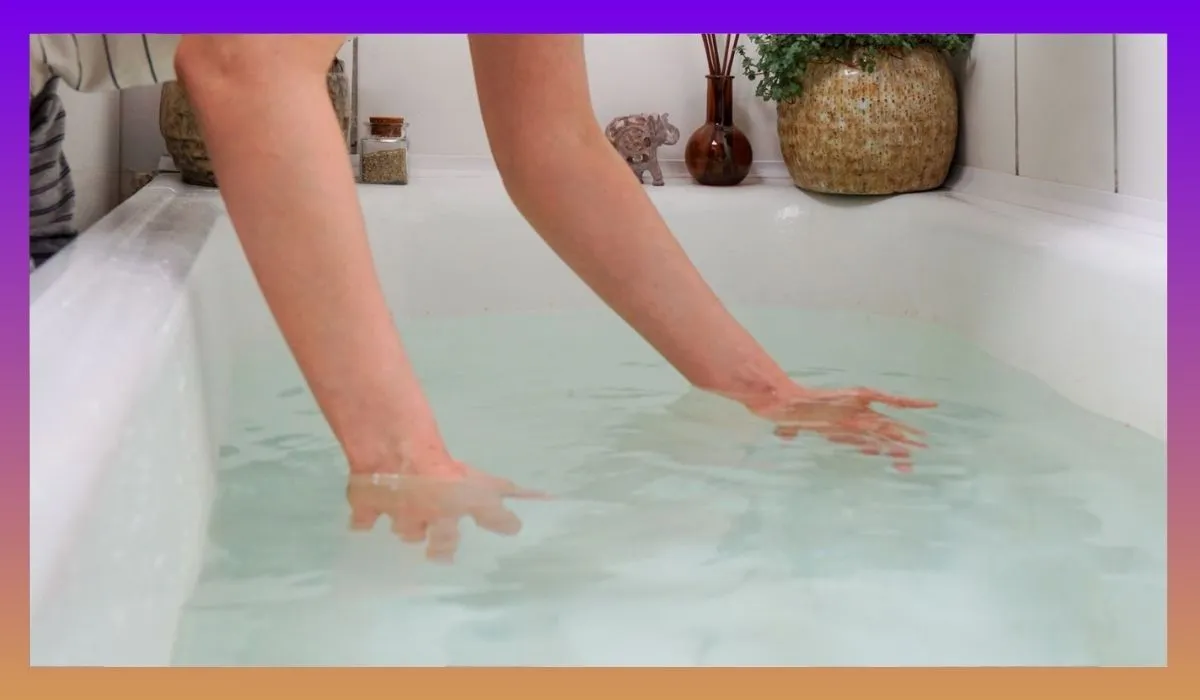Epsom Salt Bath For Back Pain: A Natural Remedy For Relief
Back pain is a common ailment that affects millions of people worldwide, often leading to discomfort, reduced mobility, and a diminished quality of life. While there are various treatments available for back pain, ranging from medication to physical therapy, many individuals seek natural remedies to alleviate their symptoms and promote healing. Among these remedies, Epsom…

Disclaimer: This article has been generated with the assistance of AI tools. While our research team has fact-checked the content, readers should independently verify information for accuracy and reliability.
Back pain is a common ailment that affects millions of people worldwide, often leading to discomfort, reduced mobility, and a diminished quality of life. While there are various treatments available for back pain, ranging from medication to physical therapy, many individuals seek natural remedies to alleviate their symptoms and promote healing. Among these remedies, Epsom salt bath for back pain has emerged as a popular choice, valued for its ability to soothe sore muscles, reduce inflammation, and ease tension in the back. Let’s explore the benefits of Epsom salt baths for back pain relief and how to incorporate them into your wellness routine.
Understanding Epsom Salt:
Epsom salt, scientifically known as magnesium sulfate, is a mineral compound composed of magnesium, sulfur, and oxygen. Despite its name, Epsom salt is not a true salt but rather a naturally occurring mineral found in underground deposits. It has long been used for its therapeutic properties, particularly in relieving muscle aches, improving circulation, and promoting relaxation.

How Epsom Salt Baths Work for Back Pain:
- Muscle Relaxation: Epsom salt baths are known for their muscle-relaxing properties, thanks to the high concentration of magnesium. Magnesium plays a crucial role in muscle function and relaxation, and soaking in an Epsom salt bath allows the body to absorb magnesium through the skin, helping to ease muscle tension and stiffness in the back.
- Reduced Inflammation: Sulfate, another component of Epsom salt, may help reduce inflammation in the body. Inflammation is a common contributor to back pain, and soaking in an Epsom salt bath may help soothe inflamed tissues, providing relief from discomfort.
- Improved Circulation: The warmth of an Epsom salt bath can help improve circulation, which is essential for delivering oxygen and nutrients to the muscles and tissues of the back. Better circulation can promote healing and reduce pain by flushing out toxins and metabolic waste products that may contribute to discomfort.
- Stress Reduction: Stress and tension can exacerbate back pain by causing muscle tightness and stiffness. Epsom salt baths offer a relaxing and therapeutic experience, helping to calm the mind and body and alleviate stress-related muscle tension in the back.
How to Take an Epsom Salt Bath for Back Pain Relief:
- Prepare the Bath: Fill a bathtub with warm water, ensuring that it is comfortably warm but not too hot. Add Epsom salt to the water according to the package instructions. Typically, one to two cups of Epsom salt per standard-sized bathtub is recommended.
- Soak and Relax: Immerse yourself in the Epsom salt bath and soak for at least 15 to 20 minutes, allowing your muscles to relax and the minerals to be absorbed through your skin. Use this time to breathe deeply, unwind, and let go of tension in your back and body.
- Hydrate: Drink plenty of water before and after your Epsom salt bath to stay hydrated and help flush out toxins released during the bathing process.
- Follow with Gentle Stretching: After your bath, consider incorporating gentle stretching exercises or low-impact activities to further relax and loosen tight muscles in the back.
Precautions and Considerations:
While Epsom salt baths are generally safe for most people, it’s essential to consult with a healthcare professional before using them, especially if you have any underlying health conditions or concerns. Or you can opt for Epsom salt supplements like Balmorex Pro, which is said to be safe in various customer reviews. Additionally, individuals with certain medical conditions, such as diabetes or kidney problems, should exercise caution when using Epsom salt baths and consult with their healthcare provider beforehand.
Conclusion:
Epsom salt baths offer a simple, natural, and affordable way to find relief from back pain and promote overall well-being. By harnessing the muscle-relaxing, anti-inflammatory, and stress-reducing properties of Epsom salt, individuals can soothe sore muscles, reduce tension, and enjoy a sense of relaxation and rejuvenation. Incorporating Epsom salt baths into your self-care routine can be a valuable addition to your arsenal of strategies for managing back pain and enhancing your quality of life.
Natalie Smith
Natalie Smith is a highly respected Osteopath with over 15 years of experience in treating a wide range of musculoskeletal conditions. She graduated from the British School of Osteopathy with a Master’s degree in Osteopathic Medicine and is a registered member of the General Osteopathic Council. Natalie’s expertise spans the diagnosis and treatment of issues affecting the muscles, bones, joints, and connective tissues. She utilizes a holistic, patient-centered approach, combining manual techniques such as spinal manipulation, soft tissue massage, and joint mobilization to alleviate pain and restore optimal function. Passionate about educating her patients, Natalie frequently speaks at local health workshops and has authored articles on osteopathic care for several respected medical journals. Her commitment to ongoing professional development ensures she remains at the forefront of the latest advancements in the field of osteopathy.
